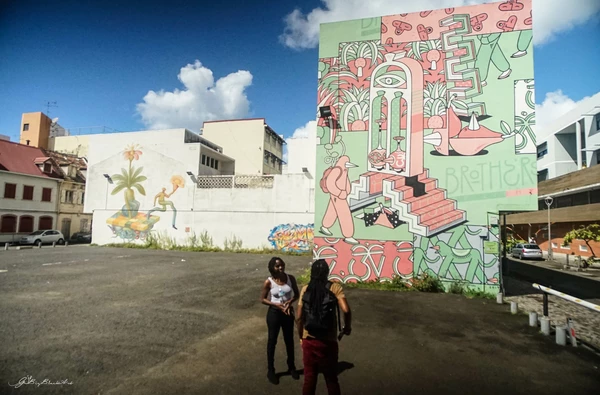Others in Gros Morne, Martinique
Read moreThe Chateau Dubuc and its micro-museum
Museums in Trinité, Martinique

-
Lasts about 6h30
-
Phone : +596 596 58 09 00
- You own this tourist site and want to change its content? Contact us.
Overview
The Dubuc castle is located in the commune of La Trinité, in the east of Martinique. This heritage vestige is a former agricultural dwelling of Tartane. The castle is located on the peninsula of the Caravelle.
The Château Dubuc house
The dwelling was first known for its sugar and coffee operations. The Château Dubuc is in fact the former house of the master of this exploitation.
It was built in 1725 at the request of Louis du Buc du Galion, grandson of the colonist Pierre du Buc. The remains of the house and the adjacent land are protected as historical monuments. The few remaining stones mark the boundaries of the castle walls. The latter owe their name to the way they were built.
This dwelling is based on the classic plan of the large colonial huts of the 18th century. There is a staircase integrated into the central body. The builders used rubble and basalt stones. This house closely resembles the few sugar factories of the same period. There is no trace of the dwellings built for the slaves. Nevertheless, the structures reserved for the exploitation of coffee and sugar remain. These can be visited. The main house is adjoined by another construction. It was most probably a dungeon. This place could also be used as a vault for the storage of spices.
Louis du Buc du Galion
Château Dubuc was built in 1725 and appears on maps of Martinique from 1773. It was built at the request of Louis du Buc du Galion, grandson of Pierre Dubuc. Originally from Normandy, he is known to have been a colonel of the militia. He was one of the first to found a dynasty of sugar planters on the island. He participated in numerous expeditions against the Caribbean Indians. As a reward for his bravery, he received a concession in the north of Martinique.
He landed on the island and settled there from 1671. The family's installation on the Caravelle peninsula was decided by his son. Nevertheless, it was his grandson who was the one to initiate the construction of the farm. He is also at the origin of the buildings integrated into it. The installations presented are considerable. They suggest the practice of smuggling and slave trade. There are chests and warehouses that reveal the practice of clandestine activities. After its abandonment in the 1770s, SIATNO acquired the estate in 1954.
The Château Dubuc is now a protected site. The professionals have implemented a program of restoration and development of the site.
Château Dubuc is the third most visited site in Martinique. Saint-Pierre and the Domaine de la Pagerie in Trois-Ilets are the two most visited sites. The ruins of the sugar factory organized around the castle and the dungeons can be visited.
A micro-museum allows visitors to learn more about the history of the site and its inhabitants. Now in ruins, the castle is part of the nature reserve of the Regional Natural Park. The Château Dubuc has been classified as a historical monument since 1991. It bears witness to the colonial past of the northern region of Martinique.
What to expect
7 photos







The museums of the island of Martinique
- The Chateau Dubuc and its micro-museum
- The Bernard David Museographic Space
- The Museum of Popular Arts and Traditions
- The Father Pinchon Museum
- The Fishing Museum
- The Volcano House
- The Earth Sciences Discovery Centre
- The House of Cane
- The Ecomuseum of Martinique
- The slaves' savannah
- The Sugar Factory and Distillery Le Galion
- The Rum Museum
- Departmental Museum of Archaeology and Prehistory of Martinique
- The Banana Museum
- Regional Museum of History and Ethnography of Martinique
- Sea Museum of Martinique
- Memorial of the 1902 Catastrophe
- The Pagerie Museum
Other sites in Martinique
Some activities to do in Martinique

35 €/adulte - lasts 2h
350 €/tarif unique - lasts 7h

70 €/adulte/enfant - lasts 4h














